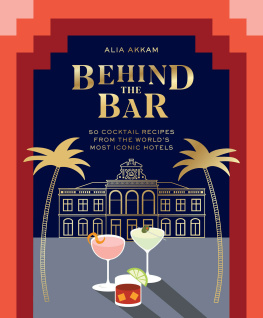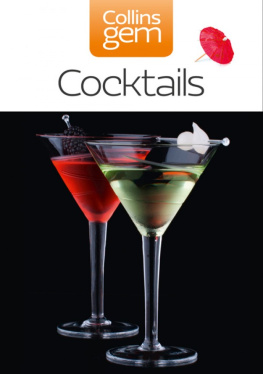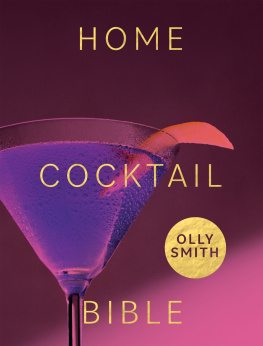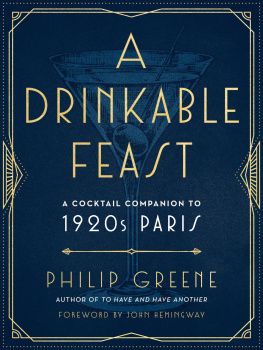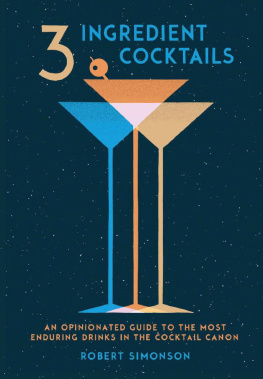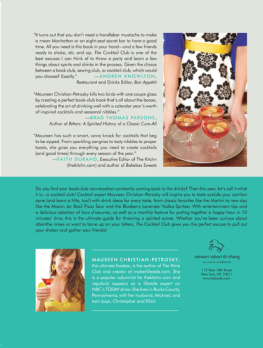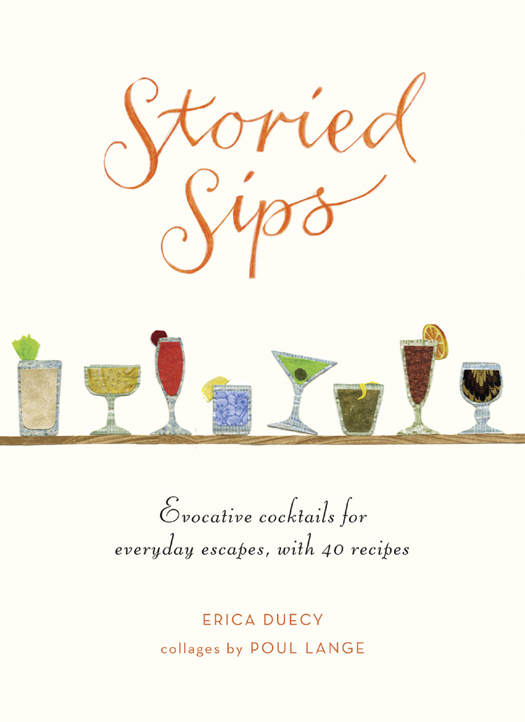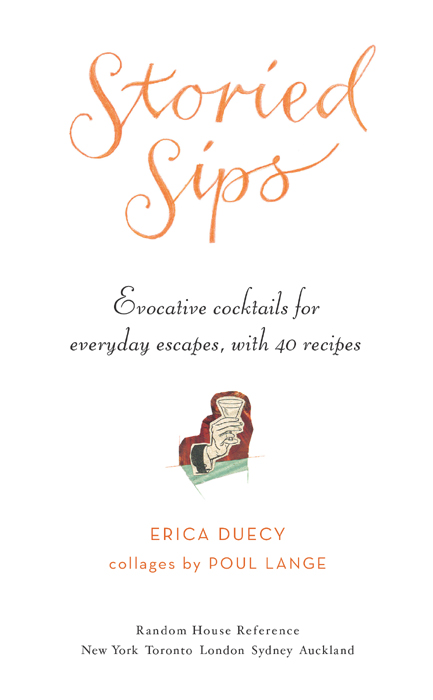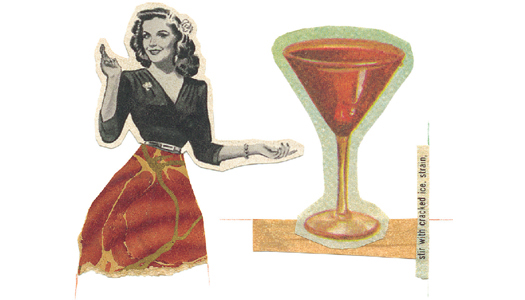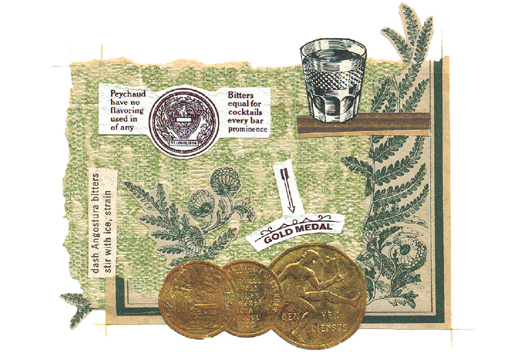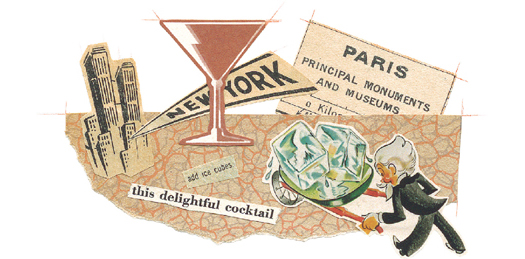Copyright 2013 by Erica Duecy
All rights reserved. Published in the United States by Random House Reference, an imprint of Random House LLC, New York, a Penguin Random House Company, and in Canada by Random House of Canada Limited, Toronto.
RANDOM HOUSE is a registered trademark of Random House LLC.
This book is available at special discounts for bulk purchases for sales promotions or premiums. Special editions, including personalized covers, excerpts of existing books, and corporate imprints, can be created in large quantities for special needs. For more information, write to Random House LLC Special Markets/Premium Sales, 1745 Broadway, MD 3-1, New York, NY, 10019 or e-mail .
Collages, drink photography, and calligraphy: copyright 2013 by Poul Lange
Credits: Amanda DAcierno, senior VP , publisher ; Fabrizio La Rocca, VP , creative director ; Tina Malaney, associate art director ; Chie Ushio, senior designer ; Jennifer Romains, manager ; Erica Duecy and Kayoko Suzuki-Lange, photo styling ; Amy Metsch, VP , associate publisher ; Maren Monitello, editor ; Sue Daulton, VP , operations ; Tom Marshall, associate director, production ; Alison Skrabek, associate director, managing editorial ; Kaitlyn Robinson, managing editor ; Ciara Robinson, production editor ; Katie Fleming, senior publicist
Visit the Random House Web site: www.randomhouse.com
eBook ISBN: 978-0-375-42622-3
v3.1
To Jono & Gia
Arranged from lightest to heaviest
s Old Hollywood ties.
These cocktails are more than just drinks. They have helped define eras, reinforce social customs, fte the seasons, and mark historic events. Some cocktails have even become icons, conveying messages about personal style, social status, and cultural trends in their conical glasses.
In our everyday lives, cocktails can inspire wanderlust, encourage romance, and lubricate social situations, among their many applications. The drinks may be refreshing or warming, calming or invigorating. And they add an undeniably festive edge to any eventrevelers sipping brilliantly colored concoctions, ice cubes tinkling as the background track, and the bartender shaking up another round. On an even more quotidian level, cocktails can also provide a delicious little daily escape, an elegant reward for a hard days work.
In the early days, cocktails werent indulgences, but rather curative remedies. The first-known definition of the word appeared in the May 13, 1806 issue of The Balance and Columbian Repository in Hudson, New York. The papers editor wrote: Cock tail, then is a stimulating liquor, composed of spirits of any kind, sugar, water and bitters...
cocktail) and Angostura, made by a German doctor in Venezuela. The overblown curative powers of bitterssome claimed to cure malaria or other serious diseasesled to bitters being disparaged as snake oils.
But whether or not one believed in the medical efficacy of sipping bitters with spirits, there was no denying that they made most liquor taste better. The consumption of healing bitters also added an air of legitimacy to drinking establishments where patrons would show up in the morning for an eye-opener (the best is the ), and then again for a midmorning bracer, lunchtime fortifier, afternoon reviver, evening aperitif, and finally, the necessary nightcap.
reflected New York City sophistication.
from the landmark Raffles Hotel in Singapore.
During Prohibition, from 1920 to 1934, most bitters brands died off, and cocktail culture suffered a major blow. Cocktails were still being invented, but mostly outside of the United States (with the exception of Detroits memorable emerging from across the pond.
After World War II, cocktail culture began its resurgence. Drinks that were already considered classics, like the those cocktails typified mid-century modern life, the era of the office Martini cart and the three-Martini lunch.
With a growing middle class in the late 1940s, travel to tropical places was an exotic new reality. Whether boarding planes to places like French Polynesia, Puerto Rico, and Mexico, or just armchair travelling, a new thirst for tropical experiences propelled drinks like the into the mainstream.
By the time the resembled convenience store slushiesbrightly colored, sugary drinks served in supersize quantities.
The turn of the millennium marked the beginning of a cocktail renaissance. In just about any city in the country, you can find bars using fresh juices, and some that even make their own bitters and vermouths.
Even better, home bartenders have gotten in on the act, learning the classics, refining their techniques, and adding their own tweaks to this infinitely adaptable art form. Cocktail parties are no longer the domain of cheap vodka and canned juices, but rather an outlet for sophisticated cocktails served in vintage glassware with top-shelf ingredients.
With the bar raised to new heights, theres no better time to take a journey through cocktail history. Well celebrate the crafts most notable stories, toast the ingenuity of drink innovators, and sip our way through the best cocktails of the past 200 years. Cheers!
The process of making a cocktail is an aesthetic treat in itself. Theres the pleasurable anticipation, pondering what youll make. The selection of exquisite glassware, shiny bottles, and exotic liqueurs. A few moments of precise measuring and mixing, and voil! A well-made cocktail is a thing of beauty, worthy of contemplation as it passes your lips.
Quality over quantity is the philosophy that will elevate your cocktails to the heights of Jazz Age glamour. Spirits and liqueurs should be top-shelf (or at least a cut above standard), juices freshly squeezed, and glasses shined to a sparkling finish. Herewith are the tools and techniques to help you make the most memorable cocktails.
Theres nothing more disheartening than drinking the last few lukewarm sips of a Martini. Save yourself the disappointment by making cocktails in smaller glasses, which can be found in vintage shops and specialty retailers online. Most cocktails in this book are around four ounces for short drinks without ice, and around eight ounces for long drinks served over ice. Each recipe in this book specifies a glass shown here.


